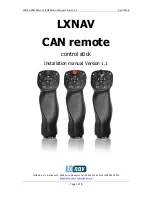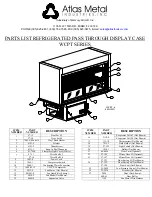
WEATHER DISPLAY INTERPRETATION
WARNING
The illustrations in this guide are only examples. Never use your
WX-500 to attempt to penetrate a thunderstorm. The FAA Advisory
Circular, Subject: Thunderstorms, and the Airman's Information
Manual (AIM) recommend that you "avoid by at least 20 miles any
thunderstorm identified as severe or giving an intense radar echo."
CAUTION
There are several atmospheric phenomena other than nearby thunder-
storms that can cause isolated discharge points in the strike display
mode. Clusters of two or more discharge points in the strike display
mode however do indicate thunderstorm activity when they reappear
after clearing the screen. Avoid the clusters and you'll avoid the thunder-
storms. In the cell display mode, even a single discharge point may rep-
resent thunderstorm activity and should be avoided.
INTRODUCTION
The following examples are designed to help you relate the patterns of
+'s or x's on the Stormscope screen to the size and location of thunder-
storms that may be near your aircraft.
A black and white grid in the examples represents the airspace around
your aircraft. (See Figure 13-4.) Each square in the grid represents a
100 by 100 nm area. A circle represents the area being monitored by
your Stormscope system. Areas of gray or black indicate thunderstorms.
The darker the area, the greater the rate of electrical discharge activity.
Figure 13-4 - Airspace Diagram
Rev 1 Mar/2000
KMD 150 Pilot's Guide
115
Stormscope Operation
KMD 150 PG 5/12/00 12:58 PM Page 115








































